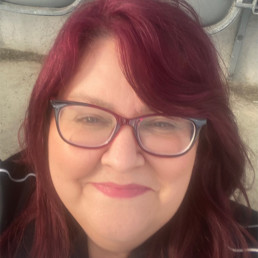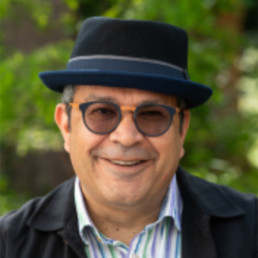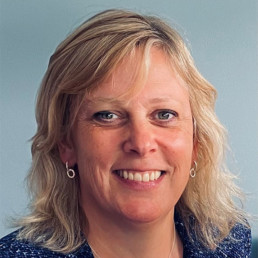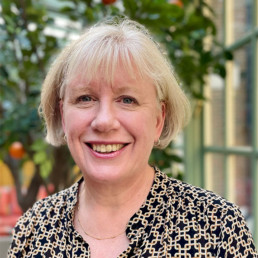A Class Apart

Written by Dr Teresa Crew
Dr Teresa Crew SFHEA is a Senior Lecturer in Social Policy with research interests relating to various social inequalities. More specifically Dr Crew's research explores the barriers faced by working class people in education. She is the author of the book "Higher Education and Working Class Academics: Precarity and Diversity in Academia" (Palgrave Macmillan, 2020) which examined the experiences of working class academics. Her second book, “The Intersections of a Working Class Academic Identity. A Class Apart”, will be published by Emerald in July 2024.
The echo of footsteps resonating through university hallways often carries with it a narrative of unearned advantage. This is in stark contrast to the uphill climb some have faced just to set foot on these grounds. For many working class academics (WCAs) like myself, each step reflects complex feelings of taking pride in rising above class constraints combined with a persistent sense of unease that we do not fully belong within these elite spaces. Far from being unique, this reveals that despite loud diversity rhetoric, quiet biases continue obstructing the WCA experience.
My extensive research incorporating over 250 interviews and surveys WCAs across the UK over the past 5 years reveals systemic barriers continue to make academia an inhospitable environment for many scholars from disadvantaged backgrounds. Nearly 75% faced ingrained classism subtly woven through campus culture via small slights eroding confidence in belonging. These obstacles are likely deterring talented potential working class scholars from pursuing academic careers.
Classist microaggressions served as the ever present undercurrent with manifestations ranging from derogatory comments questioning their credentials and mocking regional accents. Women endured layered inequities – both gender and class biases. Unpaid service tasks consumed valuable time otherwise dedicated to scholarly writing necessary for advancement, reflecting embedded biases limiting their mobility. Ethnic minority WCAs encountered underrepresentation and racialised stereotypes that questioned their intellectual capacity, coupled with the assumption that their presence was simply a result of diversity initiatives rather than merit.
My research also exposed profound institutional fractures at the intersection of class and disability. Participants recounted struggles to obtain reasonable adjustments. This disregard for individual needs was particularly harmful for those reliant on precarious incomes, as the absence of family wealth amplifies their vulnerability.
Our lived experiences offer a crucial counterpoint highlighting how WCAs display remarkable resilience, strong “aspirational capital” and determination. WCAs typically serve as mentors, role models, and support systems for many marginalised students. We offer innovative teaching methods and curricular interventions aimed at uplifting excluded voices and dismantling entrenched hierarchies. These interventions, informed by lived experiences at the margins, adds unique depth and insight to WCA scholarship, making us invaluable assets that enrich the tapestry of academic discourse.
Despite our remarkable resilience and talent, WCAs often find their potential curtailed rather than nurtured. Hiring discrimination, promotion bias, and precarious employment create significant hurdles, constructing invisible yet potent barriers to curtail our career advancement. Overburdened workloads and the absence of tailored support networks further exacerbate these challenges, creating a “chilly climate” within academia that often discourages many WCAs from reaching their full potential.
We must actively dismantle these barriers by challenging entrenched structures and disrupting the harmful effects of classist practices that erode individual aspirations and stifle working class potential. This demands bold, systemic change.
Key areas of action include:
- #MakeIt10. To create real equal opportunities, we must end unfair treatment based on an individual’s social class background and add social class as a protected characteristic in the Equality Act 2010
- WCAs need stable employment with living wages, enforceable rights, and consistent hours.
- Targeted career development programmes and mentoring specifically for WCAs.
These strategic interventions, informed by the powerful narratives of WCAs navigating the system, hold the key to unlocking the transformative potential of an inclusive academia. Only then can we ensure that knowledge and empowerment reach all corners of society, shaping a future where the collective brilliance of diverse minds, regardless of background, can truly flourish.
Observations on the implementation of Relationships, Sex, and Health Education (RSE) in an English Primary School

Written by Alex Baird
they/them
Before moving to the Higher Educator sector seven years ago, I worked in various schools for over twelve years, latterly as Director of Sport. At the University of Bedfordshire I am a Senior Lecturer in Sport and Physical Education, an EDI Lead, and the Vice Chair of the LGBTQ+ Alliance staff network. I have just finished an EdD at UCL and the research I write about here constituted my EdD thesis.
My research took place in a primary school in Greater London during the summer term of 2021, just as Relationships and Health Education (including the new LGBT content) had become mandatory. At this time, Covid-19 restrictions were lessening though some protocols were still in place and the effect of lockdowns on both pupils and staff was evident. The school has no religious affiliation but the majority of pupils are Muslim, with a high proportion of English as an additional language (EAL) learners and higher than (the national) average of pupils receiving free school meals (FSM). The research was designed to appreciate how teachers feel positioned and work alongside them to create and teach an inclusive and effective RSE curriculum. Participants included five (non-LGBT identifying) females from the school who held a range of positions, roles, and experience but had all previously taught RSE and were currently teaching in Key Stage 2. Participants were asked to reflect upon RSE and the school culture via semi-structured online interviews. RSE lessons and other subject lessons were observed. Teachers’ reflections of lessons were gathered after observation through an informal discussion.
In interviews teachers expressed a commitment to a rights-based approach in RSE and highlighted the value lessons offered to facilitate dialogue with pupils. Lesson observations revealed a cautious approach to the age at which certain topics (e.g. puberty and conception) were covered and when these topics were covered, dialogue did not deviate from the purchased curriculum PowerPoint slides. The culture and routines of RSE lessons closely resembled other subject lessons observed, that is pupils engaged and valuing the subject, generally sitting in their allocated class seats but the authority and attention remaining on the teacher at the front of the class. Teachers wanted to offer fixed, clear and definitive truths, reinforcing good behaviour and deeming some pupils’ questions as inappropriate. Teachers remained uncertain about what personal opinions they could express whilst still adhering to professional conduct. Lessons which were only 45 minutes in length, shorter than Mathematics and English lessons observed, left teachers often hurrying the pace to try to cover the content. Lesson observations highlighted that gender norms are still being powerfully reinforced including the use of gender stereotypes in scenarios and segregated sex education lessons which send these messages overtly and covertly to pupils.
In light of the current heated and polarising debates surrounding LGBT lives in the UK, I would like to stress my call to rethink how RSE is taught should not be taken to mean it should not be taught. A fuller range of pedagogical approaches that include a critical and postmodern orientation are required to recognise pupils’ agency, their pre-existing knowledge, their emotions, and to the likely presence of pupils in LGBT families and pupils who are or may come to identify as LGBT. Effective RSE remains dependent upon schools providing sufficient training for staff, listening to pupils, and communicating effectively with all parents/carers to address misconceptions or issues. Actualising and normalising LGBT themes needs to go beyond merely a bullying discourse to seek to critique broader school culture and practices.
A portrait of the teaching of the British Empire, migration and belonging in English secondary schools

Written by Dr Jason Todd
Jason is a Departmental Lecturer at the Department of Education at the University of Oxford and currently leads the PGCE History programme. Before joining the University of Oxford, he taught history for 19 years in various London state schools, including time as an Assistant Headteacher in a Special Needs school.
I am working on a research project aiming to provide an empirical portrait of current teaching and learning around the interconnected themes of empire, migration and belonging in England’s secondary schools. This project’s aim is a simple one: to support teachers with the teaching of the British Empire, migration and belonging.
Histories of empire and migration are fundamental to understanding modern Britain including how we make sense of issues of belonging and identity. Recent events, from Brexit in 2016, to the Windrush Scandal in 2018 and the Black Lives Matter activism of 2020, have drawn attention to the interplay between the past and the present in dramatic ways, highlighting not only the salience of these histories but also their contested nature.
Despite its importance, there is a shared acknowledgement at the heart not only of recent campaigns from organisations such as the Runnymede Trust and Black Curriculum Project but also emphasised within the Commission on Race and Ethnic Disparities report, that there is currently no credible, comprehensive evidence base from which to reliably judge the extent to which today’s secondary students are being taught about the history and legacies of the British empire at all, let alone what they are being taught, in what manner and why. There is however evidence that teachers themselves have identified the need for targeted professional development support and training in this area.
It is precisely in response to this demand that I, as lead author of a letter to the Times in 2020, reiterated the TIDE-Runnymede recommendation that the government invests in better supporting teachers to confidently tackle these complex and potentially contentious themes. Both the Times letter and TIDE-Runnymede campaign made explicit reference to work from the UCL Centre for Holocaust Education’s internationally renowned and distinctively research-led approach to transformative teacher professional development. The Portrait of the teaching of the British Empire, migration and belonging research project was thus conceived as a crucially important intervention towards ultimately supporting teachers by first providing a much needed, robust and comprehensive, empirical evidence base. Our survey is one tool we are using to examine issues associated with teaching the British Empire, migration and belonging in schools and we encourage teachers of all subjects to complete it. https://redcap.idhs.ucl.ac.uk/surveys/?s=L33D9YEX7KRET3EX
We think that this project represents a tremendous opportunity to understand and shape the way young people engage with the enduring legacies, and ongoing debates, regarding the British Empire. Given the complexity of the topics, and the contested nature of many current debates, our desire is to offer nuance and illumination.
You can find out more about this project on our website https://portraitemb.co.uk/
These potent legacies shape the lives of millions, deeply affecting our sense of identity and belonging. It is critical that we forge paths towards better collective understanding of these subjects, however controversial. Confident and informed teachers are, of course, central to this.
Jason Todd is Co-Lead Investigator on a collaborative research project “A portrait of the teaching of the British Empire, migration and belonging in English secondary schools.” which brings together scholars from IOE, UCL’s Faculty of Education and Society and the University of Oxford’s Department of Education.
A Curriculum That Empowers Young People in Care

Written by Anu Roy
Anu is a TeachFirst leadership Alumni and digital trustee and teacher committee lead for charities in England and Scotland. She is currently a digital curriculum development manager and works in inclusive education projects incorporating tech.
This year is the first time I have developed and designed curriculum models for young people in the care system. Although students I have taught in previous roles come from a range of backgrounds, this role is the first time I have looked at curriculum specifically through the lens of an education that often forgets the difficulties faced by care experienced young people.
Out of nearly 12 million children living in England, just over 400,000 are in the social care system at any one time. They face a lot of disruption in their learning journey due to personal circumstances, financial difficulties and challenging home circumstances. This means in comparison to their peers, care experienced young people fall behind in most education and health outcome indicators.
Working with a team of educators, social workers, web developers and UX/UI designers, these are the ways we believe curriculum development can help experienced young people thrive:
- Introduce context alongside technical concepts: technical concepts across all subjects can be difficult for CEYP to master in a short space of time so contextual information wedged on either side of a technical explanation will enable their understanding and grasp to learn and embed the technicality in their wider learning framework.
- Champion peer learning– CEYP could have challenging interactions with direct instruction if it reminds them of unpleasant previous instructor situations therefore activities that use peer learning not only lowers the stakes for them to develop their self confidence and interactivity in a lesson but encourages building friendships within the classroom while learning key concepts together.
- Open ended ethos– instructors and teachers should veer away from specifying the outcome of a learning topic as ‘to achieve grade _’- instead the learning objectives should first be anchored to exploring the curiosity around the topic with prompts such as ‘what would happen if____?’ or ‘what could we learn if we explored how___’. Academic pressure to perform instantly can feel overwhelming for CEYP. While they should not be met with lowered expectations, instead the reframing helps to welcome them to first explore before learning the topic and moving on to an evaluative stage where they gain more agency.
- Knowledge connection outside the classroom-Learning feels more relevant for CEYP when they are introduced to topics through the lens of real world use. Introducing a curriculum through a skills development framework linked to increased employment motivates them to understand the use of each topic, further strengthened by real world examples, work based scenarios and soft skill demonstrations. It helps them bridge the transition from education to active skill application and any learning based curriculum should also have opportunities through project work for practical applications related to public speaking, project management, team building and problem solving for CEYP to gain experience in these areas.
Many educators are unaware of the students in their classrooms who come from a care experienced background. While this should not be the only aspect of their identity to focus on, a student centered approach to relationship building alongside these curriculum findings should enable educators to build strong relationships by understanding the story and journey many of their students have taken to make it to the classroom and learn each day. Aimed with this knowledge and bespoke approach, schools and their wider communities can foster a sense of belonging for care experienced young people, something they have been denied of for too long.
The Misuse of Gender

Written by Katy Carpenter
Katy is a Pastoral Lead and EDI Lead in a Birmingham primary school. She is currently studying for her PhD in Education, researching how children explore and negotiate gender through creative writing.
Graham et al (2017) wrote that gender is typically constructed within a binary of two natural biological entities – man and woman. As such, it is very easy to conclude that gender is inherently linked to one’s sex. Even a modern understanding of gender as a social construction and a form of expression finds itself difficult to detach itself, semantically, and conceptually, from one’s being male or female. The language around gender remains restricted to a range of words pertaining to masculinity and femininity, a binary mode of thinking which reduces our positioning of people who deviate from the gender norm as either masculine women or feminine men. It seems that without this binary, we would find it very difficult to understand gender-diverse people.
How have we gotten here, why is this the case, and need it be? Our historical, social and cultural norms have made it so that gender appears to be indistinguishably linked to sex, and historically, sex and gender have been treated as synonymous in law and culture (Case, 1995). Even contemporary culture continues to conflate sex and gender. On an application form I will often be asked to identify my gender, and drop-down options usually are a choice of male, female, non-binary, or prefer not to say. Now if what HR wanted to know was how I express myself, they could change these options to masculine, feminine (due to where we are in history these terms are still helpful in denoting a style or aesthetic), non-binary, prefer not to say, and in addition they might even add a few other options like flamboyant, assertive, glamorous. Of course, this would be limitless and unmanageable. It also wouldn’t be very useful to HR because when this question is being asked, what they actually want to know is my sex assigned at birth, or indeed, whether I don’t find this label relevant to my ability to do the job, in which case I might opt for non-binary or even the as question-raising option, prefer not to say.
The conflation of sex and gender is problematic. When we use the terms interchangeably, people end up confused. I treat gender as a social construct, historically derivative of the male/ female sex binary but actually conceptually distinct from it. A popular view of gender is one of whether you’re male (a biological occurrence), female (a biological occurrence), or reject those biological categories (a social occurrence). The drop-down boxes on application forms suggest that this is also an institutional view of gender. However, an important distinction between sex (meaning one’s sex assigned at birth) and gender (meaning one’s expression- which has both personal and political motivations) needs to be upheld, else we need not have two terms at all. A semantic and thus conceptual conflation of sex and gender subsequently leads to a confusion of the debate around matters pertaining to gender. Indeed, one of the outcomes of this conflation is that when I talk about gender with my friends and colleagues, I am taken to be discussing transgender matters. Channel 4’s Gender Wars, which aired earlier this summer, looked promising in bringing discussion about gender to a wider audience than academics and people leading EDI work, however in focusing on the debate around the trans community, it unfortunately upheld the impression that all debates around gender are debates around trans issues. The gender discussion is much wider than this, and there is a difference between the matter of being transgender and the critical questioning of the boundaries of gender presentation.
In relying on a binary between masculinity and femininity when developing a framework for conceptualising gender, even those who accept and embrace gender fluidity are restricted to this idea of two ends of a linear spectrum and everything else in-between. I suggest a different way of picturing gender (because let’s face it, things that come with a picture are always easier to understand). I suggest an egg, where male, female and intersex people reside centrally in the yolk, and the white circle around the outside is the space of gender – how one expresses oneself. By removing the image of the line, one form of gender presentation is no nearer to or further from any one sex than it is another, and thus releases itself from the binary of masculine and feminine forms of presentation.
In her 1990 book Gender Trouble, Judith Butler controversially questioned the category of woman. This was contentious because it destabilised ‘woman’ as a protected and distinguished category, with fundamental difference to men, something centuries of feminist work unwittingly embedded. This idea set ablaze the acknowledging of gender (in a feminist context, the doing of womanhood) as a process of construction – gender as a doing rather than a being, separate from sex. This was called gender performativity. With this different understanding came the possibility of a critical evolution around identity and performance. There is much yet to be explored.
References
Butler, J (1990) Gender Trouble. Feminism and the Subversion of Identity. Routledge, New York.
Case, M. A., (1995) Disaggregating gender from sex and sexual orientation: The effeminate man in the law and feminist jurisprudence. Yale Law Journal, pp.1-105.
Channel 4 (2023) Gender Wars.
Graham, K., Treharne, G.J. and Nairn, K. (2017) Using Foucault’s theory of disciplinary power to critically examine the construction of gender in secondary schools. Social and Personality Psychology Compass, 11(2).
An Exploration of the Persisting Legacy of Imperial Rhetoric in Modern Education through a Case Study on ‘Eugenics, Race, and Psychiatry in the Cape Colony, 1890-1908: Dr Thomas Duncan Greenlees’

Written by Rosa Legeno-Bell
Rosa is co-founder and Director of Diverse History UK (DHUK); an LGBTQ+ and female-owned business. DHUK provides educational consultancy to address diversification of educational curricula. Rosa has worked in the education sector for over a decade, mainly in inner-city London comprehensives; as a History Teacher, Head of History and Associate Assistant Principal. Rosa graduated with distinction from the University of East Anglia with a Master’s Degree in Modern History.
This blog examines imperial rhetoric around race and eugenics through a case study of colonial psychiatrist Dr Duncan T Greenlees and explores how the legacy of imperialism lives on in the education sector.
Greenlees was the medical superintendent of Grahamstown Asylum in the Cape Colony from 1890–1907, regarded by his peers as an authority on race and eugenics (T. Duncan Greenlees M.D., 1930).
Greenlees’ Theories on the Native Mind
‘[African natives’]… wants are simple and their habits primitive; they are… willing servants, and naturally look up to white people…’ (Greenlees, 1882)
Greenlees maintained that biological and cultural differences between Africans and Europeans explained native mindsets. He attributed native ‘insanity’ to the exposure of ‘savage’ minds to Western civilisation (Swartz, 1995). The myth of primitive natives was key to the justification of British paternalism in the colonies as well as the confinement of natives who refused to conform to their prescribed roles in colonial society (Summers, 2010). In A Statistical Contribution to the Pathology of Insanity (1902), Greenlees declared that:
‘…[if] brought under the artificial influences of civilisation…[the native] …is particularly liable to chest troubles.’
And also claimed:
‘While mania is considered a disease of undeveloped [native] brains, melancholia may be regarded as one of developed [European] brains’
(Greenlees 1902, p. 12).
The falsity that non-whites were incapable of melancholia was supported by later colonial psychiatrists and is still echoed in practice today (Rosenberg, 2019). Greenlees also appealed to the common myth of the unhygienic native, stating they are ‘extremely filthy in habits,’ (Greenlees, 1902. p. 17) a stereotype commonly used to underpin dehumanising imperial rhetoric.
The influence on Greenlees of Victorian hegemony, such as Darwin’s theory of natural selection, is discernible. Darwin’s theory was commonly misapplied by imperialists to claim racial superiority and, under the guise of Social Darwinism, to justify imperial actions (Dafler, 2005). In Insanity Among the Natives of South Africa Greenlees warns:
‘The time will soon come when civilisation will overshadow [native tribes] with its baneful pall, bringing innumerable diseases in its train and ultimately exterminating all races that oppose its progress.’
(Greenlees, 1895, p. 75)
Greenlees’ Principles of Eugenics
‘…how much suffering might be avoided if…men were allowed to exercise the same care in the selection of their mates as they do when breeding their cattle’
(Greenlees, 1892, p. 302).
During the Nineteenth Century, white-working class British people were also dehumanised and infantalised by the British state. The white working classes were integral to imperial rule as they powered the industrial revolution on home soil through cheap labour and terrible working conditions.
Greenlees worked in the Cape Colony after the emancipation of Transatlantic slaves and during the Second Boer War (Facing History and Ourselves, 2018). At this time, it was believed that many South African whites, particularly Afrikaans, were becoming less civilised, mirroring British stereotypes of native peoples (Klausen, 1997). For Greenlees it was paramount that the white race maintained an air of supremacy. (Burdett, 2014), He argued that the breeding of ‘lunatics,’ ‘imbeciles’ and ‘drunks,’ constituted a grave threat to imperial rule (Klausen, 1997).
Greenlees’ also theorised about ‘coloured’ (mixed-raced) people, referring to them as ‘the bastard.’ Highlighting his fears regarding race and degeneracy, he contended:
‘a mixture of white and black blood… seems to present the worst characteristics of both races.’ (Greenlees,1892, p. 71)
Greenlees opined that, mixed-race communities were degenerates and threatened British dominance (Kolsky, 2013), a view mirrored by segregationists in the southern states of America around the same time.
So, Greenlees advocated for people to make genetically ‘wise’ choices over their marriage partners and proclaimed that it is:
‘…absurd… that we should devote more…consideration to the mating of our horses and pigs than we do that of our sons and daughters’ (Greenlees, 1903, p. 11).
The Impact of Colonial Rhetoric around race and class on the Current Education System
‘… decolonising and detoxifying the education regime are a sine qua non for… academics, especially those who are cognisant of the true meaning of education.’
(Nkwazi Nkuzi Mhango, 2018)
Elhinnawy (2022) maintains that a diverse book collection does not suffice and that educators need to honestly explore their own internal prejudices and their origins. While Bentrovato (2018) contends that colonialism is a ‘hallmark of modern world history.’ whose legacies survive because of modern institutions such as education.
But, decolonisation has been controversial. Seemingly concerned, The Department for Education (2022), introduced a guidance on impartiality in schools in 2022 on the back of the growing call to decolonise education.But decolonisation is possible still, as the guidance does not include any additional statutory requirements, and there is still room to decolonise if a range of historical evidence is engaged with and views are not taught as objective fact. The dichotomy between a government and its institutions can cause friction. Leading governmental leadership posts are filled disproportionately by privately educated people (predominantly white and male) who attended Oxbridge colleges. In 2019, 57% of the government’s cabinet and 36% of those who work in the media had attended an Oxbridge university (The Sutton Trust, 2019). Notably, private schools and Oxbridge universities were avid mouthpieces for colonial rhetoric.
Despite the controversy over decolonisation, it is a no-brainer. As diversity increases, decolonisation becomes more urgent –with 43% of young Black people saying that:
‘A lack of curriculum diversity was one of the biggest barriers to…achieving in schools,’(Anna Freud, 2021).
Yet many schools still pursue whitewashed curricula and old-fashioned pedagogies. Critics of decolonisation have argued against it on the basis that we should not eradicate history, but true decolonisation does not entail deleting history, it encourages adding to existing narratives and amplifying historically silenced voices. Another criticism is that decolonisation only considers marginalised black voices, but that is too literal an understanding. Decolonisation believes in amplifying all marginalised voices such as the white working classes who too were downtrodden and exploited for the empire. One compelling reason for decolonisation is that the amplification of many voices and celebration of shared histories may also repair relationships between marginalised communities, too often pitted against each other.
Greenlees provides a significant insight into the ideologies that propped up the British empire, and serve as a shocking reminder of the philosophies on which modern Britain was founded. If educators work together to build a fairer education for our students, then we are playing a part in creating a kinder and more compassionate society for our students and our children.
Read more and find the references here:
Teach First and diversity in the teaching workforce

Written by Jenny Griffiths
Jenny is Teach First’s Research and Knowledge Manager. She is an expert in research related to teacher development and educational inequality, with a particular interest in understanding teacher retention. Prior to working at Teach First, Jenny achieved a BA (Hons) and MPhil from the University of Cambridge, and an MSc from Birkbeck, University of London. She taught History and Sociology and was a Head of Department in London schools for nearly a decade.
The proportion of postgraduate trainees reporting their ethnic group as belonging to an ethnic minority, has increased from 14% in 2015/16 to 22% in 2022/23 (UK Government, 2023). This is similar to the diversity of the working age population (21.8%) (UK Government, 2023). However, research by the National Foundation for Educational Research (NFER) shows that 60% of schools in England have no teachers from ethnic backgrounds other than white, and pupils – 35.7% of whom are from a minority ethnic background – are less likely to encounter teachers from black, mixed or other ethnic backgrounds (NFER, 2022). In fact, a significant number of the pupils in of schools will have no experience of a Black teacher throughout their time in school (Tereshchenko, Mills & Bradbury, 2020). We believe that this lack of representation, particularly in STEM (science, technology, engineering, maths) subjects, may make it harder for young Black pupils to engage with these subjects and pursue related careers.
Over the past 20 years Teach First have screened approximately 120,000 applications and assessed over 50,000 candidates for a place on our training programme. We are committed to increasing diversity in the teaching workforce and we’ve learnt a lot about how to root out bias in our application and assessment process, but we are committed to continuing to learn and improve.
As part of that work, along with Ambition Institute, we supported the NFER to carry out research looking at racial equality in the teacher workforce. This research showed that the most significant ethnic disparities are seen at the early stages of teacher’s careers, starting with ethnic minority people being over-represented among teaching applicants, but having a lower acceptance rate compared to other groups. We are pleased that Teach First are the only ITT provider where an ethnic minority group, those of mixed ethnicity backgrounds, has the highest acceptance rates. We also have less disparity in acceptance rates between ethnic groups than other providers, but we are continuing to work to reduce this gap still further (NFER, 2022).
Our recruitment strategy is designed to identify potential and reduce the risk of bias in our decisions, first by removing personal details in applications. The most significant change however was the introduction of contextual recruitment at the application stage. This allows us to take greater account of the different backgrounds of applicants in order to attempt to offset the impact of socioeconomic disadvantage. Applicants complete a short survey about the type of school they attended, whether they were eligible for free school meals, socioeconomic background and any significant disruption such as time in care, refugee status, or being a young carer. Whilst applicants must demonstrate clear evidence of our competencies, this screening helps us to understand where grades that are lower than our traditional entry level requirements are not necessarily reflective of potential. This approach has led to a 15% increase in offers to join the training programme overall and Black, Asian and Ethnic minority representation increase from 12% in 2017, to 18% in 2018 (after the introduction of contextual recruitment), and to 22% in 2019 with changes to our selection day processes.
This improvement notwithstanding, we know there remain particular challenges in attracting Black and other underrepresented groups into teaching, especially in STEM subjects. To address this we are working in partnership with Mission 44 to recruit and train Black STEM teachers to work in schools serving disadvantaged communities in England. Our initial research specifically looked at how to attract more STEM graduates from Black and mixed Black ethnic backgrounds into the teaching profession. Motivation to enter teaching varies individually, but also differs between social groups. A discrete choice experiment enabled us to test elements of our programme where we felt changes might have the biggest impact on recruitment.
What we found was that Black and mixed Black STEM graduates saw salary as being of high importance. We also found that location mattered: respondents indicated a clear preference for a guaranteed placement in London or within 60 minutes of their home address. Perhaps more interesting in terms of understanding changing work and lifestyle priorities, was the interest in lifestyle benefits, such as restaurant or gym discounts, as being likely to motivate more graduates to apply. Focus groups elaborated on some of these responses, indicating the importance of financial and societal pressures in decision making. In teaching where starting salaries are perceived to be relatively low, the importance of career progression was clear. Another finding central to our understanding and future work, was the concern of Black graduates about the level of diversity and inclusion in the schools where they would be working. There was a wariness of being in a school with an exclusively White teaching workforce, and despite clear desire to be a positive role model, these concerns posed a perceived risk to their wellbeing which needs to be addressed if we want to address ethnic inequalities in the teacher workforce in a sustainable manner.
You can download our report on this work to read the findings from the research in full and the recommendations proposed.
Despite some gains, we know that disparity remains and we remain committed to reviewing, re-evaluating and improving our practices to support diversity and inclusion in our education system, for teachers, schools and pupils.
How Well Do You Know Your Governance Professionals?
On International Women’s Day (8 March) 2023, GovernorHub, part of The Key Group, released a research report delving into the salaries and working patterns of 1,298 governance professionals working in schools and trusts.
It sheds light on the often-hidden roles of governance professionals, who this research reveals are indeed predominantly female, and explores how their salaries fare against those in comparable roles in other sectors.
See the key findings of the report below, and some recommended actions to help overcome pay disparities to support the recruitment and retention of talent in these important roles.
Key findings
The survey of 1,055 clerks, 100 governance co-ordinators and 143 governance leads found that:
- Around 90% of governance professional roles in schools and trusts are filled by women, making this one of the most female-dominated careers in the education sector and beyond
- The majority (85%) of clerks surveyed reported working part time – for governance co-ordinators it’s 49%, and for governance leads it’s 37% – which is far higher than the government’s national employment data at 23% of working-age people working part time in 2021
- Almost a third (30%) of all female governance professionals surveyed reported having taken a career break due to caring responsibilities, compared to 4% of male respondents
- Clerking roles in schools and trusts appear to have the largest salary discrepancies, with a median salary of £25,000 pro-rata, which is substantially lower than the median salary for equivalent roles in the local government (£33,782), public services (£33,636), and not-for-profit (£31,620) sectors
- Over half (54%) of clerks surveyed reported feeling ‘underpaid’ or ‘extremely underpaid’; comments from some respondents suggest this is often caused by needing to work more hours than are allocated to each task or meeting
- A lack of visibility and understanding of clerking roles, combined with their increasing complexity, might be contributing to the stagnation of pay felt by many clerks surveyed
A quote from one part time clerk respondent illustrates a lack of awareness, in some cases, of this role:
“Having worked for 10 years with the school, I had to ask for my salary to be reviewed a couple of years ago and the rate was upped. I checked my letter of appointment and it said my salary would be reviewed every year – I pointed this out, but it isn’t reviewed every year. I think my role falls through the cracks. As a part time employee, I don’t know if I am missing out on any other work benefits, pension etc., and whether I’m entitled to equipment to help me to do my job.”
Recommendations
To help improve working conditions for governance professionals and, in doing so, help recruit and retain valuable talent for the sector:
- Employers – should use annual appraisal meetings as an opportunity to review and benchmark pay, and follow government guidance on reducing your organisation’s gender pay gap
- Self-employed individuals – should negotiate hourly rates in line with benchmarked salaries, as well as hours assigned to each task
- Everyone working in governance professional roles – should set and share a working-time schedule to help improve work/life balance, and join a union, to help give them a voice and professional advice
Conclusion
GovernorHub’s research report gives governance professionals in schools and trusts the evidence to show what they’re worth, and to look to align their pay with equivalent roles in other sectors.
The report recommends that employers and individuals take action to overcome the pay disparities, and ensure that governance professionals are recognised and rewarded appropriately.
By taking these actions, the education sector can strengthen its workforce of governance professionals who play such a vital role in supporting our schools and trusts. Championing these key roles will only serve to support the best possible educational outcomes for our children and young people.
Why Don’t We Talk About Intersectionality in Schools?

Written by Dr Jo Trevenna
Dr Jo Trevenna has over 20 years' experience of educational leadership from early years to post-graduate level. Her ongoing academic interests centre on Leadership and EEDI. Her company, Potential Education, offers leadership reviews, support and training and EEDI-focused school support.
There can’t be many of us still thinking that human identity is singular. Right? Aren’t we a combination of diverse characteristics that create and impact on our existence? Expectations and assumptions around combinations of characteristics are increasingly illuminated in societies, with light thrown on those who experience multiple discrimination and shade thrown on those who discriminate against those with different combinations of characteristics. The complexity around identity is foregrounded in explorations of intersectional discrimination. Yet intersectional disadvantage is not generally a focus for English schools.
Why?
Is it a lack of understanding and awareness or the lack of external accountability?
The Law
Critical awareness of the vulnerabilities faced by those with exact combinations of identity characteristics was first associated with the legal work of Kimberlé Crenshaw which looked into the discrimination experienced by African-American women in terms of ‘intersecting patterns of racism and sexism’ (Crenshaw 1991, p1243). Crenshaw asserted that anti-discrimination legislation in the United States did not actually protect African-American women because, when making legal claims against an employer, this particular group had to choose between a focus on either their race or gender, even though the discrimination they faced came at the ‘intersection’ of these two identity characteristics.
Section 14 of The Equality Act (2010) recognises the potential for discrimination pertaining to ‘combined discrimination: dual characteristics’ (Legislation.gov.uk 2010). The focus here is limited to direct discrimination against the combination of only two characteristics. More significantly, Section 14 has never, in fact, come into force. It just sits there in provisional status.
As it stands, therefore, the law does not adequately protect against intersectional discrimination and, in terms of English schools, there is no legal imperative to tackle intersectional discrimination.
Publicly Available Data
Published performance table data is hugely significant for schools. The first stage of the high profile ‘school and college performance measures’ website offers only a single-axis approach to pupil data. Some basic intersectional data is available on the ‘Explore Education Statistics’ section of the platform relating to ethnicity and disadvantage, disadvantage and gender, SEN and ethnicity. However, the data remains on cohort numbers and does not provide any information which may indicate the impact of those intersections on pupil academic performance, exclusions/suspensions and attendance. FOI requests can be made and the GOV.UK website also offers the facility for researchers through its new Grading and Admissions Data for England (GRADE) service. This service may be a significant step forward in terms of higher level transparency but it does not provide readily accessible data to the public on intersectional discrimination affecting pupils.
Data revealing the intersectional factors affecting pupils is available to school leaders and governors, local authorities and Ofsted via the ‘Analyse School Performance’ (ASP) secure access platform. Filtering mechanisms enable reports combining specific pupil characteristics, eg: boys with SEN, and scatterplot graphs make it relatively easy to identify patterns of underperformance because of key combinations of protected characteristics thereby highlighting potential impact of discrimination and flagging up need to address. Another school performance document is the Inspection Data Summary Report (IDSR), which is accessed on the secure ASP portal. The IDSR is a key document for Ofsted Inspectors when preparing to inspect a school and informs initial discussions with headteachers. Like the ASP tool, the IDSR does provide schools and Ofsted with a retrospective mini intersectional tool in its coding on scatterplots of the progress and attainment of pupils by binary gender classification and SEN status and deprivation status. However, there is no public access to this data.
To sum up: disadvantages experienced by pupils with specific combinations of identity characteristics in English schools are not readily flagged in publicly published school data. Perhaps Ofsted, which does have access to this anonymised intersectional data via the ASP and IDSR, has the potential to be the driving force in helping schools engage with intersectional discrimination.
Taking a sample of 68 Ofsted Section 5 inspection reports published in a six month period (not including those which inspected an already ‘Good’ school), there are only references to single-axis identity characteristics. In this sample, Ofsted, as the key inspection mechanism for schools, does not engage with the impact of intersectional discrimination on pupils. The lack of referencing in this sample of reports is not surprising given that Ofsted’s School Inspection Handbook only relates identity characteristics on a single-axis framework.
As it stands, then, there is no legal accountability, no easily accessible public data to enable transparent exploration of the impact on pupils and little Ofsted engagement with intersectional discrimination and disadvantage. Right now, without the external accountability structures, it is the choice of school leaders whether or not to adopt an intersectional approach to their schools. Given that most of us agree that identity has multiple components, it is surely time to explore how an intersectional approach can throw light on intersectional disadvantage and discrimination and therefore help schools to tackle it head on despite the lack of an external accountability framework.
Desire to study diverse drama and playwrights in schools not matched by current educational landscape

Written by Margaret Bartley
Editorial Director for Literary Drama at Bloomsbury. Since 2002 she has been the Publisher of the Arden Shakespeare and now has editorial responsibility for Bloomsbury's digital platform Drama Online, the Methuen Drama imprint, and the Arden Shakespeare. She is Bloomsbury’s representative on the Lit in Colour Advisory Board and sponsor of Bloomsbury Academic’s Diversity, Equity and Inclusion working group.
90% of drama texts taught at GCSE and 96% at A Level English Literature are written by white playwrights
New research released today by Bloomsbury Publishing, through its Methuen Drama imprint and as part of its Lit in Colour programme, illustrates the popularity and contradiction of teaching drama texts for English Literature at GCSE and A Level in today’s secondary schools in England and Wales.
Drama (excluding Shakespeare) is not compulsory in the GCSE English Literature specification, yet 93% of teachers who responded to Bloomsbury’s survey choose to teach a drama text to a GCSE class. Under 2022 curriculum specifications, drama texts by white playwrights account for 90% of drama texts taught at GCSE and 96% at A Level English Literature. This contrasts with 93% of teachers who said they would like to see a more ethnically diverse range of writers offered by exam boards. This desire from teachers is met with student demand. Of the teachers surveyed, 65% said there was a demand from their students to study more ethnically diverse writers.
Launched in 2020 by Penguin Books UK, alongside race equality think tank The Runnymede Trust, the Lit in Colour campaign aims to support UK schools in diversifying the teaching of English and to increase students’ access to texts by writers of colour and from minority ethnic backgrounds.
Bloomsbury’s Methuen Drama imprint has a world-class play portfolio and playwright relationships that complement and expand on the original Lit in Colour campaign. The programme’s aim is to introduce new plays to the curriculum, offering students access to more diverse, representative and inclusive work, opening up the ways in which all drama texts can be studied, creating new ways to explore plays and contributing to wider discussion and representation in the classroom.
Other findings from the research illustrate the important role drama plays within English Literature at secondary school study:
-
- There are currently just 2 drama set texts by Global Majority writers available at A Level English Literature
- With the right support and resources in place, 84% of respondents said they would be likely to choose a new drama text for GCSE English Literature
- We asked teachers about the support they need when teaching drama set texts: the top three resources listed were recordings of performances (67%), model student answers to exam questions (65%) and resources on social/cultural context (57%)
- 66% of survey respondents said they would like more support to teach texts that tackle issues relating to race or ethnicity
-
- 0% of students answered an exam question on a play by a Global Majority writer in England in 2019*
- In England in 2019*, 79% of GCSE English Literature candidates answered an exam question on a drama text, 349,337 students (65%) answered a question on An Inspector Calls in 2019 assessments
Margaret Bartley, Editorial Director for Literary Drama at Bloomsbury, commented: “The landscape of teaching drama in English schools has remained largely unchanged. Our research shows that there is real appetite for change and that publishers, theatre makers, examiners and teachers need to work together to deliver change to the curriculum. If we empower teachers to switch texts with confidence, students can continue to benefit from the positive impact and influence of studying plays. In the future, those plays will better reflect the student cohort and ensure students see themselves represented in the texts they study. Bloomsbury is committed to playing our part in delivering this change through our proactive programme of new play text publishing, supported by the resources teachers and students need to study and enjoy them.”
Change is coming – what should the future look like?
Real change is coming. Just two years on from the Lit in Colour campaign, efforts are being made by all five major awarding bodies in England and Wales to diversify the set texts within both GCSE and A Level specifications for English and Drama. By 2025 English Literature students in England and Wales will have the option to choose from 10 new modern play texts by writers of colour at GCSE and A Level.
The importance of live performance
Drama can be more accessible than other genres and many enjoy the interactivity that the format brings. A 2015 curriculum change to English Literature removed the necessity for a student to watch a live production, leading to systemic changes in the teaching of drama texts as part of the English curriculum, which are difficult for teachers to counter.
Teaching drama as an experience through live performance is critical in the successful introduction of new plays. When diverse texts are performed in theatres and included on the school curriculum, more could be done to engage with the playwrights themselves. There needs to be more opportunity for playwrights to talk about their work and context, and for schools and teachers to engage with playwrights directly.
Having access to staged performances through services such as Bloomsbury’s Drama Online, which has collections of filmed live performances including those from the National Theatre and Shakespeare’s Globe, is vital to bringing teaching to life, inspiring debate and illustrating what the author or playwright is trying to convey.
Empowering teachers to take a different approach
The research shows a clear desire among teachers to expose pupils to a diverse range of literature, driven by the need to reflect the student cohort and ensure students see themselves represented in the texts they study. There is also a desire to share diversity of thinking and hear voices other than their own. Importantly, this needs to represent a variety of backgrounds and to portray a range of lived experiences including, but not limited to, race-related issues.
Introducing new play texts to the classroom is a big undertaking and requires time and energy from teachers who are already stretched and time-poor. It is clear that teaching a new text is a significant undertaking for teachers who need to create new schemes of work and lesson plans, and research the text’s critical and performance history. Research responses show that teachers prefer to refer to past papers and evidence of the approach taken in assessment for benchmarking their teaching plans. This understandably means teachers often choose to teach the familiar and reliable options with which they have had positive learning and exam outcomes in the past.
Giving teachers the tools they need will empower them to teach new texts and approaches with greater confidence, helping them achieve the success they want for their students.
Teachers also told us that they have more freedom at Key Stage 3 (KS3) to choose diverse texts, as the curriculum is not limited by exam specifications. Teachers can therefore introduce drama texts from diverse writers at KS3 and build confidence in the teaching of these texts, before being limited by exam specifications at higher key stages.
There is also an opportunity to teach the familiar set texts differently, while they remain on the syllabus, by reframing how they are taught. Alongside new texts from diverse writers, existing texts can be taught through a different lens that resonates more with today’s students, such as gender, identity or class. Given the predominance of plays like this, reframing the way established canonical texts are presented offers teachers and students enriching ways to engage with them alongside newer texts.
Methodology
This report draws on research from multiple sources: a quantitative survey, in-depth interviews, roundtable discussion and desk research. Participation was entirely voluntary. Research was carried out by independent research company Oriel Square Ltd and supported by Insightful Research. The online survey, carried out in June 2022, targeted teachers of GCSE English Literature in England and Wales. Of the 141 respondents, 16.3% identified as Black, Asian or of Multiple Ethnic background, compared to 10.4% of teachers in England. Interviews were conducted with a sample of four teachers, selected either because they were taking part in the Lit in Colour Pioneer Pilot programme, ran in partnership with Pearson Edexcel, or because they had responded to the survey and agreed to take part. As a response to the teacher research, Bloomsbury, the National Theatre and Open Drama UK hosted a roundtable discussion with stakeholders from publishers, awarding bodies, theatre organisations, and practitioners, authors and playwrights to discuss how the drama and theatre community could support schools with the teaching of diverse drama texts.
*2019 assessment data was used in the research as the most reliable data, as COVID-19 interrupted live exams data and 2022 data is just being published
Media enquiries: to Ginni Arnold, Head of Corporate Communications at Bloomsbury on ginni.arnold@bloomsbury.com or 07968730247.
Editors’ Notes
Bloomsbury English and Drama for Schools list includes:
- The popular Student Edition series and GCSE Student Editions and Guides featuring plays for more than 14 core set texts for GCSE and A Level English Literature and Drama such as Blood Brothers, A Doll’s House, DNA, The Crucible, and An Inspector Calls.
- The Arden Shakespeare Third series for A Level and beyond, and Arden Performance Editions for performance and study.
- The RSC Shakespeare series, including The RSC Shakespeare: Complete Works and 36 individual play editions.
- New Mermaids series for classic play editions including Doctor Faustus and The Duchess of Malfi.
- The ever-growing Plays for Young People series which offers age-appropriate plays by a diverse selection of contemporary playwrights for young people to perform and study.
Find out more at Bloomsbury.com/DramaForSchools and @MethuenDrama
About Bloomsbury
Bloomsbury is a leading independent publishing house, established in 1986, with authors who have won the Nobel, Pulitzer and Booker Prizes, and is the originating publisher and custodian of the Harry Potter series. Bloomsbury has offices in London, New York, New Delhi, Oxford and Sydney.
About Lit in Colour
Lit in Colour was launched by Penguin Random House and The Runnymede Trust in October 2020. The campaign aims to ensure English literature better reflects contemporary culture and society, to increase understanding around racial equality and to give students access to a diverse range of authors and books.
Lit in Colour published a major piece of research: https://litincolour.penguin.co.uk/ Diversity in Literature in English Schools in June 2021 which reviewed the current state of play in English Literature education and made practical recommendations for change, carried out by an independent team at Oxford University’s Department of Education.
Find more information at penguin.co.uk/litincolour and @PenguinUKBooks
About The Runnymede Trust
The Runnymede Trust is the UK’s leading independent race equality think tank. We generate intelligence to challenge race inequality in Britain through research, network building, leading debate, and policy engagement.
Runnymede is working to build a Britain in which all citizens and communities feel valued, enjoy equal opportunities, lead fulfilling lives, and share a common sense of belonging.
In order to effectively overcome racial inequality in our society, we believe that our democratic dialogue, policy, and practice, should all be based on reliable evidence from rigorous research and thorough analysis.
@RunnymedeTrust |runnymedetrust.org


